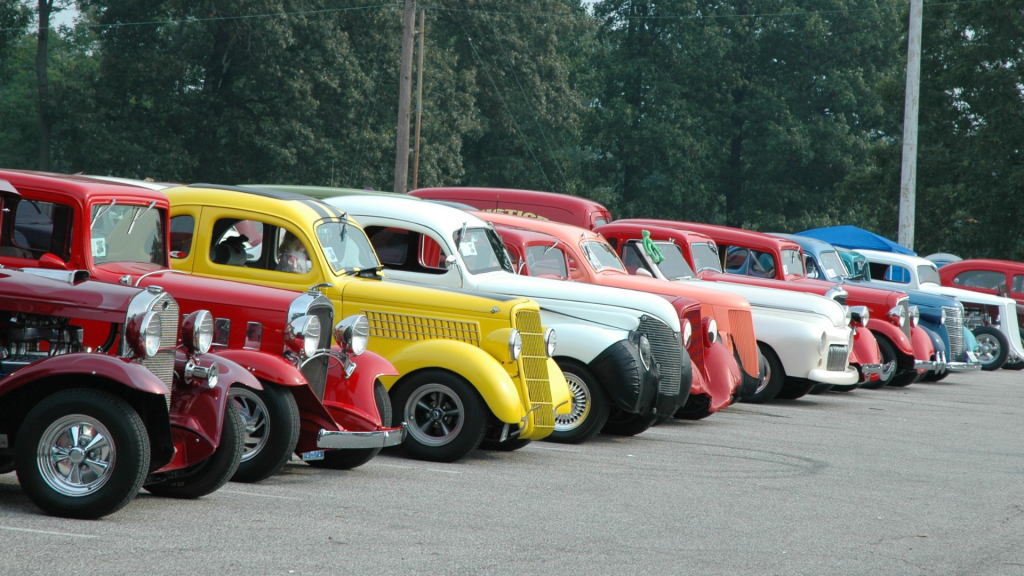Introduction
Hot August Nights, one of the largest and most celebrated classic car events in the United States, transforms Reno, Nevada into a nostalgic paradise of chrome, horsepower, and rock ‘n’ roll. Over several days each summer, tens of thousands of visitors flock to experience the gleaming classic cars, vintage music, drag races, show-and-shines, and community events.
Table of Contents
With such a massive draw, the success of Hot August Nights hinges not only on dazzling displays and entertainment but also on precise, efficient, and well-managed staffing. Every festival attendee experiences the event through interactions with staff—whether they’re parking attendants, security officers, food service vendors, or volunteers handing out programs. The ability to attract, train, and coordinate the right people is what ensures smooth operations, attendee satisfaction, and safety.
This guide provides an in-depth breakdown of staffing considerations specific to large-scale automotive festivals like Hot August Nights. It covers strategic planning, role breakdowns, recruitment methods, training needs, scheduling logistics, and contingency planning—all tailored to the unique demands of this type of event.
Understanding the Scale and Nature of Hot August Nights
Before diving into staffing, event organizers must assess the scope of the festival. Hot August Nights isn’t just a single venue event—it’s a citywide celebration spread across multiple sites, including downtown Reno, Sparks, and sometimes even surrounding areas. This scale introduces several unique staffing challenges:
- Multiple event zones: Each location may require a full complement of staff—security, greeters, cleanup crews, parking teams—operating independently but coordinated centrally.
- High visitor numbers: Attendance can exceed hundreds of thousands across the week, requiring crowd control expertise.
- Outdoor and evening focus: With events running day and night, staff must work in shifts that cover variable weather, lighting, and temperature conditions.
- Specialized automotive components: Car competitions, drag races, and cruises require staff with both automotive knowledge and safety certifications.
Understanding these demands allows for accurate forecasting of staffing numbers, skill sets, and scheduling needs.
Core Staffing Categories for Hot August Nights
Staff roles can be grouped into four broad categories:
a. Operations and Logistics
These individuals ensure the physical infrastructure and behind-the-scenes systems work seamlessly.
- Site setup & teardown crews: Install and dismantle tents, barriers, sound systems, signage.
- Traffic & parking control: Direct both classic car participants and general attendees, ensure emergency vehicle access routes remain clear.
- Transport & shuttles: Operate festival buses or courtesy shuttles.
- Waste management & cleanup: Maintain cleanliness throughout high-traffic areas.
b. Guest Services
The face of the festival for most attendees.
- Information booth staff: Provide maps, event schedules, lost-and-found services.
- Merchandise sellers: Manage official festival merchandise sales.
- Ticketing & check-in teams: Handle entry points for ticketed venues or VIP sections.
- Accessibility coordinators: Assist guests with disabilities.
c. Security & Safety
Given the high value of displayed cars and the size of the crowds, security is paramount.
- Crowd control officers: Manage large groups during parades, concerts, and peak activity.
- Vehicle security teams: Patrol classic car display zones to prevent theft or vandalism.
- Emergency response staff: First aid and medical personnel on standby.
- Fire and safety monitors: Especially critical near food vendors and automotive displays.
d. Event-Specific Roles
Unique to automotive festivals.
- Vehicle staging crew: Organize and guide cars into display areas, ensuring spacing and safety.
- Judging staff: For competitions, trained in specific categories and scoring criteria.
- Race marshals: For drag or performance events, ensuring track safety.
- VIP hospitality staff: Manage special receptions for sponsors, celebrities, and participants.
Volunteer vs. Paid Staff: Striking the Right Balance
Hot August Nights has traditionally relied on a combination of paid professionals and volunteers. The right balance ensures cost efficiency without compromising expertise.
Volunteers
Pros:
- Deep community engagement—many are passionate about classic cars and the festival’s history.
- Flexible for non-critical roles such as greeting, handing out programs, and basic assistance.
- Cost-effective.
Cons:
- Varying levels of reliability and commitment.
- Need more intensive onboarding to align with festival protocols.
Paid Staff
Pros:
- Professional expertise, particularly in security, operations, and safety roles.
- Greater accountability due to contractual obligations.
- Can be deployed for specialized tasks requiring certifications.
Cons:
- Higher cost.
- May have less emotional investment in the event’s heritage.
A tiered staffing approach works best: volunteers fill guest-facing, non-technical roles, while professionals handle safety, operations, and high-responsibility positions.
Recruitment Strategies for a High-Profile Automotive Event
Securing enough qualified staff requires an early and proactive recruitment plan.
Timeline
- 6–9 months out: Secure key leadership roles (operations manager, volunteer coordinator, security chief).
- 3–6 months out: Begin broad recruitment for general staff and volunteers.
- 1–2 months out: Fill last-minute specialty positions.
Channels
- Local automotive clubs: A rich source of volunteers with a passion for classic cars.
- Hospitality schools and programs: For guest service staff.
- Event staffing agencies: For surge needs or specialized roles.
- Local community boards and social media: To reach residents eager to participate.

Training and Orientation
Training is essential to align all staff with the festival’s mission, operational procedures, and safety requirements.
Core Training Topics
- Customer service standards: Handling diverse crowds with professionalism and warmth.
- Emergency protocols: Evacuation routes, medical emergency responses, weather contingency plans.
- Communication systems: Radio usage, chain of command, reporting incidents.
- Automotive etiquette: Rules for interacting with classic cars (no touching, proper positioning, respecting owners’ requests).
Role-Specific Training
- Security staff: Incident de-escalation, theft prevention, access control.
- Race/event marshals: Track safety, technical inspections, driver briefings.
- Parking attendants: Efficient space usage, managing classic car loading/unloading.
- Volunteer greeters: Festival history, event highlights, and local tourist information.
Training Delivery
- Pre-event workshops: Multiple sessions for flexibility.
- Digital training modules: For remote onboarding.
- On-site briefings: Final instructions and updates right before shifts.
Scheduling and Shift Management
A festival of this magnitude requires precise staff scheduling to ensure coverage without overburdening team members.
Considerations
- Peak times: Concert evenings, parade days, and weekend afternoons require maximum staff density.
- Shift lengths: 4–6 hours for volunteers, 8–10 hours for paid staff with adequate breaks.
- Rotation: Staff should rotate between high-intensity and lower-intensity posts to avoid burnout.
- Overnight crews: Security and site maintenance for 24-hour coverage.
Tools
- Scheduling software: Streamlines shift assignment and communication.
- Mobile apps: Allow real-time updates for last-minute changes or emergencies.
Communication Systems
Hot August Nights spans multiple locations, so clear and reliable communication is critical.
- Two-way radios: For security, logistics, and operations teams.
- Dedicated channels: Separate lines for security, medical, and general coordination to reduce radio clutter.
- Mobile coordination apps: Allow text and push notifications for non-urgent updates.
- Central command center: Monitors all activity, dispatches resources, and serves as an information hub.
Contingency and Emergency Staffing Plans
Unforeseen challenges—bad weather, staff no-shows, equipment failure—require contingency measures.
Backup Pools
- Maintain a roster of on-call staff or floaters who can be redeployed.
- Establish relationships with local temp agencies for last-minute fill-ins.
Weather Contingencies
- Assign roles to assist with moving indoor activities or adjusting schedules in case of rain or extreme heat.
Crisis Response
- Ensure a sufficient number of trained personnel for crowd evacuation, medical emergencies, or public safety threats.

Post-Event Evaluation and Retention
Once Hot August Nights wraps up, staffing evaluation is essential for continuous improvement.
Methods
- Surveys: Gather feedback from staff and volunteers on training, support, and communication.
- Debrief meetings: Department leads discuss successes and challenges.
- Performance records: Identify top performers for early re-engagement in the next year’s event.
Retention Strategies
- Send thank-you notes and small appreciation gifts.
- Offer early sign-up opportunities for next year.
- Share event highlight reels and success stories to foster pride.
Conclusion
Staffing for Hot August Nights is a complex, multi-layered task that demands strategic foresight, community engagement, and operational precision. By clearly defining roles, balancing volunteer and paid staff, implementing robust training programs, and preparing for contingencies, organizers can ensure the event’s smooth execution year after year.
Ultimately, the heart of Hot August Nights is not just the gleaming paint jobs and roaring engines—it’s the people working behind the scenes who bring the festival to life. The right staffing approach ensures every visitor leaves with lasting memories and a deep appreciation for both the cars and the community spirit that fuels the event.

